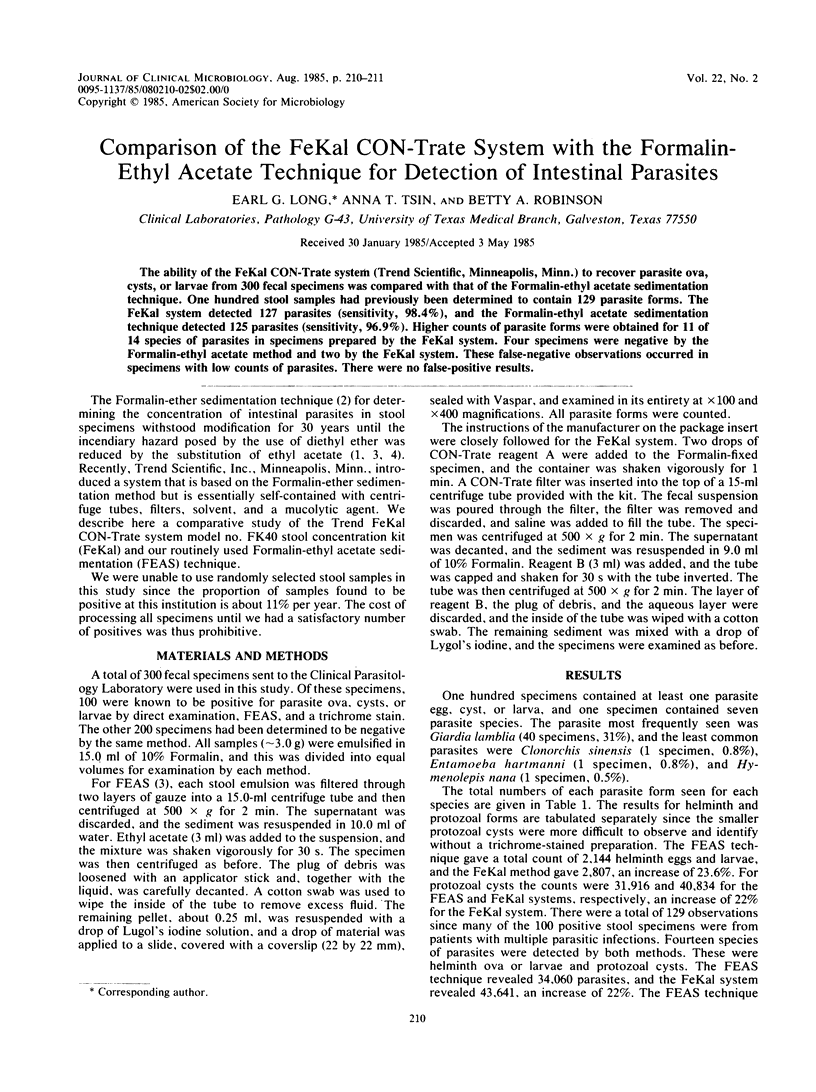Abstract
The ability of the FeKal CON-Trate system (Trend Scientific, Minneapolis, Minn.) to recover parasite ova, cysts, or larvae from 300 fecal specimens was compared with that of the Formalin-ethyl acetate sedimentation technique. One hundred stool samples had previously been determined to contain 129 parasite forms. The FeKal system detected 127 parasites (sensitivity, 98.4%), and the Formalin-ethyl acetate sedimentation technique detected 125 parasites (sensitivity, 96.9%). Higher counts of parasite forms were obtained for 11 of 14 species of parasites in specimens prepared by the FeKal system. Four specimens were negative by the Formalin-ethyl acetate method and two by the FeKal system. These false-negative observations occurred in specimens with low counts of parasites. There were no false-positive results.
Full text
PDF

Selected References
These references are in PubMed. This may not be the complete list of references from this article.
- Garcia L. S., Shimizu R. Comparison of clinical results for the use of ethyl acetate and diethyl ether in the formalin-ether sedimentation technique performed on polyvinyl alcohol-preserved specimens. J Clin Microbiol. 1981 Apr;13(4):709–713. doi: 10.1128/jcm.13.4.709-713.1981. [DOI] [PMC free article] [PubMed] [Google Scholar]
- Truant A. L., Elliott S. H., Kelly M. T., Smith J. H. Comparison of formalin-ethyl ether sedimentation, formalin-ethyl acetate sedimentation, and zinc sulfate flotation techniques for detection of intestinal parasites. J Clin Microbiol. 1981 May;13(5):882–884. doi: 10.1128/jcm.13.5.882-884.1981. [DOI] [PMC free article] [PubMed] [Google Scholar]
- Young K. H., Bullock S. L., Melvin D. M., Spruill C. L. Ethyl acetate as a substitute for diethyl ether in the formalin-ether sedimentation technique. J Clin Microbiol. 1979 Dec;10(6):852–853. doi: 10.1128/jcm.10.6.852-853.1979. [DOI] [PMC free article] [PubMed] [Google Scholar]


